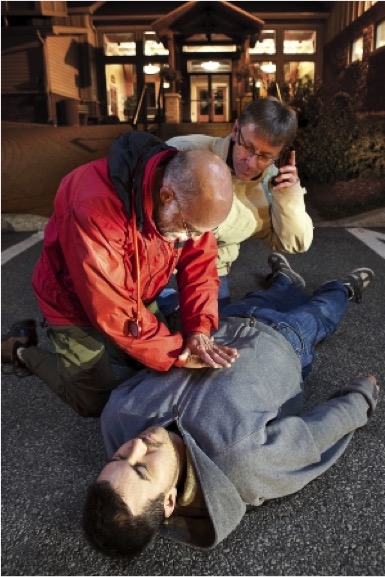
Sudden cardiac death is a leading cause of death worldwide. It is responsible for 300,000 deaths annually in America and 100,000 in the UK. This is more than stroke, lung cancer, breast cancer and AIDS combined.
Sudden cardiac death can be prevented with an implantable cardioverter defibrillator or ICD. An ICD is similar to a pacemaker. It is a small metal box, surgically implanted under the skin, with a wire that goes down to the heart.
The ICD constantly monitors the heart and can deliver treatment within seconds to prevent sudden cardiac death. Current tests miss most of the people who die of sudden cardiac death.
Today leading research has given hope for the future. An innovative technique developed by scientists at the University of Leicester creates an electrical map of the heart and accurately assesses risk of sudden cardiac death.This innovation could save many lives when delivered to front line patient care.


Sudden Cardiac Death
Heart muscle contraction is coordinated by the smooth flow of electricity through it. Sudden cardiac death is caused by disruption of this flow. The heart cannot pump effectively and the person blacks out. A similar to a smoothly flowing river changing to rapids when its flow is disrupted by rocks.

The heart goes into a chaotic rhythm called ventricular fibrillation. If untreated this is rapidly fatal but immediate treatment leads to a full recovery.

There are many other conditions that put people at risk of sudden cardiac death. There are high profile cases in athletes such as Fabrice Muamba.
Life-saving Treatment
The treatment for ventricular fibrillation is immediate cardiopulmonary resuscitation and defibrillation.



The treatment for ventricular fibrillation is immediate cardiopulmonary resuscitation and defibrillation.
Identifying those at risk
There are major limitations with current tests for selecting people for ICD devices. Most of the people who die of sudden cardiac death are not identified, while only 10% of the patients getting ICDs make use of them each year. The difficulty is in identifying which of the millions of people at risk will fall victim to sudden cardiac death.

LifeMap can accurately identify the people most at risk of sudden cardiac death. LifeMap works by creating an electrical map of the heart. This innovation could save many lives when delivered to front line patient care.





